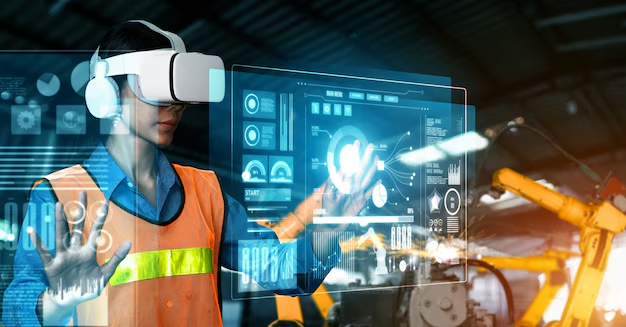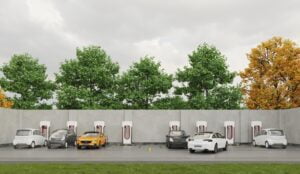Augmented Reality (AR) and Virtual Reality (VR) technologies are transforming industries, from gaming and entertainment to healthcare, training, and industrial applications. These immersive experiences rely on complex computing processes, high-resolution displays, and real-time data processing to deliver seamless user interactions. However, one of the biggest hurdles in AR/VR adoption is power efficiency.
Power consumption directly affects the usability, portability, and overall experience of AR/VR devices. Wearable headsets, smart glasses, and standalone VR units must balance performance with energy constraints to avoid frequent charging, overheating, and discomfort. As these technologies advance, optimizing power efficiency becomes crucial for delivering high-performance, long-lasting, and user-friendly AR/VR experiences.
This article explores the key challenges that contribute to high power consumption in AR/VR devices and presents innovative solutions to enhance energy efficiency.

Challenges in Power Efficiency for AR/VR
Despite rapid advancements in AR/VR technology, optimizing power efficiency remains a critical challenge. These immersive devices require high computational power, seamless connectivity, and advanced display technologies, all of which contribute to significant energy consumption. Below are the key challenges impacting power efficiency in AR/VR:
High Processing Power Requirements
AR/VR applications rely on real-time rendering, spatial computing, and AI-driven enhancements to create immersive experiences. The demand for high-performance computing leads to:
- Intensive GPU and CPU workloads for rendering 3D environments.
- Complex AI algorithms for object tracking, gesture recognition, and scene reconstruction.
- Increased power draw due to real-time processing of large data streams.
Battery Limitations
AR/VR headsets and smart glasses are designed to be lightweight and portable, limiting battery capacity. Challenges include:
- Short battery life due to continuous high-performance computing.
- The trade-off between battery size, weight, and usability.
- The need for frequent recharging, affecting user experience.
Heat Dissipation Issues
Increased power consumption generates heat, which can affect device performance and comfort. Key concerns are:
- Overheating of processors and GPUs, leading to performance throttling.
- Impact on user comfort, especially for head-mounted devices.
- Need for advanced cooling mechanisms within compact form factors.

Wireless Connectivity Power Drain
AR/VR applications often require real-time data transfer for cloud processing, multiplayer experiences, and content streaming. However, this leads to:
- High power consumption in wireless communication modules (Wi-Fi, Bluetooth, 5G).
- Increased latency and energy usage in cloud-based processing.
- Trade-offs between local processing and cloud offloading.
Display and Optics Energy Consumption
The immersive nature of AR/VR relies on high-resolution, high-refresh-rate displays that consume significant power. Major challenges include:
- OLED, MicroLED, and LCD screens requiring continuous backlighting and power-hungry refresh rates.
- Power drain from rendering stereoscopic 3D visuals at high frame rates (90Hz–120Hz).
- The need for efficient optics and projection technologies to reduce energy consumption.
Solutions for Power Optimization
To overcome power efficiency challenges in AR/VR devices, innovative strategies are required across hardware, software, and system design. Optimizing power consumption while maintaining high performance is crucial for improving usability, extending battery life, and enhancing user experience. Below are key solutions for power optimization in AR/VR:

Efficient Hardware Design
Hardware components play a critical role in power management. Optimizations include:
- Low-Power Processors and GPUs: Specialized AR/VR chipsets with optimized power consumption, such as Qualcomm’s XR platform or ARM-based processors.
- Custom ASICs and FPGA Acceleration: Application-Specific Integrated Circuits (ASICs) and Field-Programmable Gate Arrays (FPGAs) for efficient real-time processing and reduced power usage.
- Dynamic Voltage and Frequency Scaling (DVFS): Adjusting processor speed and voltage based on workload to save power.
Adaptive Rendering Techniques
Rendering optimization significantly reduces power usage without compromising visual quality:
- Foveated Rendering: Uses eye-tracking technology to render high-resolution visuals only where the user is looking, reducing GPU load.
- Variable Rate Shading (VRS): Dynamically adjusts shading rates to optimize resource usage.
- Dynamic Resolution Scaling (DRS): Adapts resolution based on content complexity to minimize unnecessary power drain.
Optimized Battery Management
Efficient battery management techniques improve overall power efficiency:
- Smart Power-Saving Algorithms: AI-driven power management systems that allocate resources based on usage patterns.
- Advanced Battery Chemistries: Exploration of solid-state batteries and lithium-silicon technologies for higher energy density.
- Energy Harvesting Technologies: Utilizing kinetic or solar energy to supplement battery power in AR wearables.
Thermal Management Strategies
Managing heat efficiently helps prevent power wastage and enhances device longevity:
- Efficient Heat Dissipation Materials: Use of graphene-based cooling systems and vapor chambers in compact designs.
- AI-Driven Power Regulation: Intelligent load balancing to reduce overheating and optimize power distribution.
- Low-Power Sleep Modes: Automatically adjusting performance levels during inactive periods to save energy.
Energy-Efficient Wireless Communication
Optimizing connectivity solutions can reduce power drain from constant data transmission:
- Optimized Network Protocols: Low-power wireless standards like Wi-Fi 6, Bluetooth Low Energy (BLE), and 5G optimizations for AR/VR streaming.
- Edge Computing Integration: Offloading processing tasks to local edge servers reduces energy consumption in cloud-dependent applications.
- Efficient Compression Techniques: AI-based data compression to minimize bandwidth and power usage.
Power-Efficient Display Technologies
Reducing display power consumption is key to enhancing battery life:
- Low-Power Display Technologies: Adoption of MicroLED and OLED displays that consume less energy.
- Adaptive Brightness Control: AI-driven ambient light sensors to dynamically adjust brightness based on user environment.
- Variable Refresh Rate (VRR): Adjusting refresh rates in real-time to optimize performance and power balance.

Conclusion
As AR/VR technologies continue to evolve, optimizing power efficiency remains a critical factor in enhancing their usability and adoption. The demand for high-performance computing, real-time rendering, and seamless connectivity poses significant power consumption challenges. However, through innovations in hardware design, adaptive rendering techniques, battery management, and energy-efficient display technologies, manufacturers can strike a balance between performance and power efficiency. Implementing strategies such as foveated rendering, low-power chipsets, and AI-driven power management can significantly improve battery life while maintaining immersive user experiences.
Looking ahead, advancements in AI-driven power optimization, next-generation battery technologies, and ultra-low-power wireless connectivity will further enhance the energy efficiency of AR/VR devices. The integration of edge computing and neuromorphic processing can reduce on-device power demands while ensuring smooth real-time interactions. As the industry moves toward more power-conscious solutions, collaboration among hardware designers, software developers, and network providers will be key to unlocking the full potential of AR/VR while addressing energy constraints.












